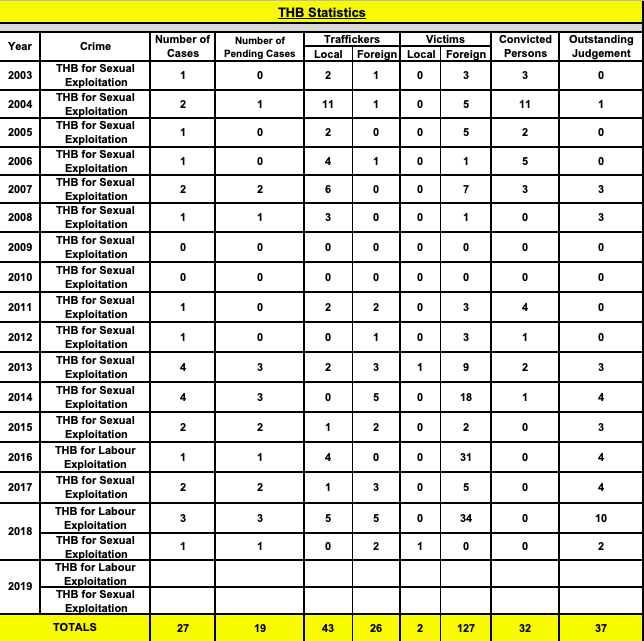Not A Single Person Has Been Convicted Of Human Trafficking In Malta Since 2015

Not a single person has been convicted of human trafficking since the start of 2015, despite 23 alleged traffickers appearing in front of the court during the same period.
Nine cases, which involve 73 different victims, since 2015 still remain pending following a relatively steady 15-year pattern of poor conviction rates. A look at police figures shows that 37 cases since 2003 remain open, with roughly 32 persons so far convicted.
The perennial issues surrounding the slow process of the courts was even identified in a recent US Department of State report over human trafficking, who noted that this continued to hamper both prosecutions and convictions.
In fact, the courts have only convicted three traffickers since 2012, with one of them resulting in a suspended prison sentence.
As it stands, Maltese law prescribes a four to 12-years imprisonment for a person found guilty of sex or labour trafficking. These penalties are even more stringent when it comes to sex trafficking, which also falls under other serious crimes such as rape.
Meanwhile, the government has identified fewer victims, continued to lack coordination among ministries, and did not adequately control licensing for massage parlours, where there was a high vulnerability for sex trafficking.
It should be noted that the police did conduct seven investigations for illegal prostitution in massage parlours, but they found no evidence of trafficking.

Police human trafficking figures
Practically all victims are foreign, while the majority of traffickers are Maltese
The victims, unsurprisingly, are overwhelmingly foreign, with just two Maltese people falling victims to human trafficking in a group of 129 people.
Meanwhile, when it comes to the traffickers themselves, Maltese people make up just about double the number of traffickers, with 43 perpetrators to 26.
Malta has so far remained as a Tier 2 country when it comes to human trafficking, with the country not fully meeting the minimum standards for the elimination of trafficking. However, it does seem to be making significant efforts to do so.
The report went on to note that the court has only actually convicted one trafficker since 2012 (this is different from police figures as convictions were recent). Meanwhile, the government has identified fewer victims, continued to lack coordination among ministries, and did not adequately control licensing for massage parlours, where there was a high vulnerability for sex trafficking.
Who are the victims of human trafficking?
In its trafficking profile of Malta, the report noted that while sex traffickers target mostly women and children, labour traffickers are relatively equal among genders.
Most forced labour victims come from China, Eastern Europe and Southeast Asia, with increasing numbers from the Philippines.
Women from Southeast Asia working as domestic workers, Chinese nationals working in massage parlours, foreign male soccer players and women from Central and Eastern Europe, Russia, and Ukraine working in nightclubs are the main populations vulnerable to trafficking.
The approximately 5,000 irregular migrants from African countries residing in Malta are vulnerable to trafficking in the country.